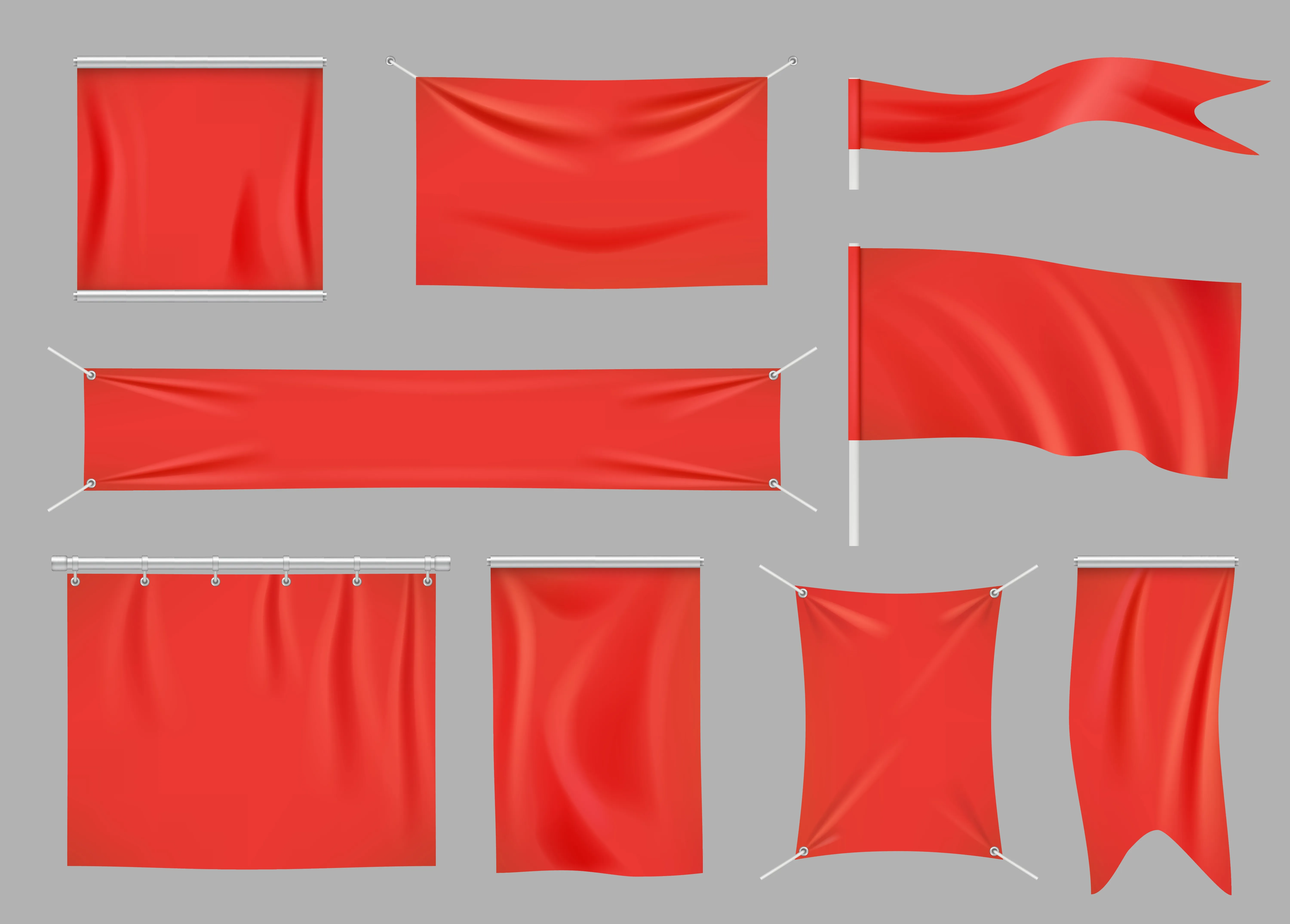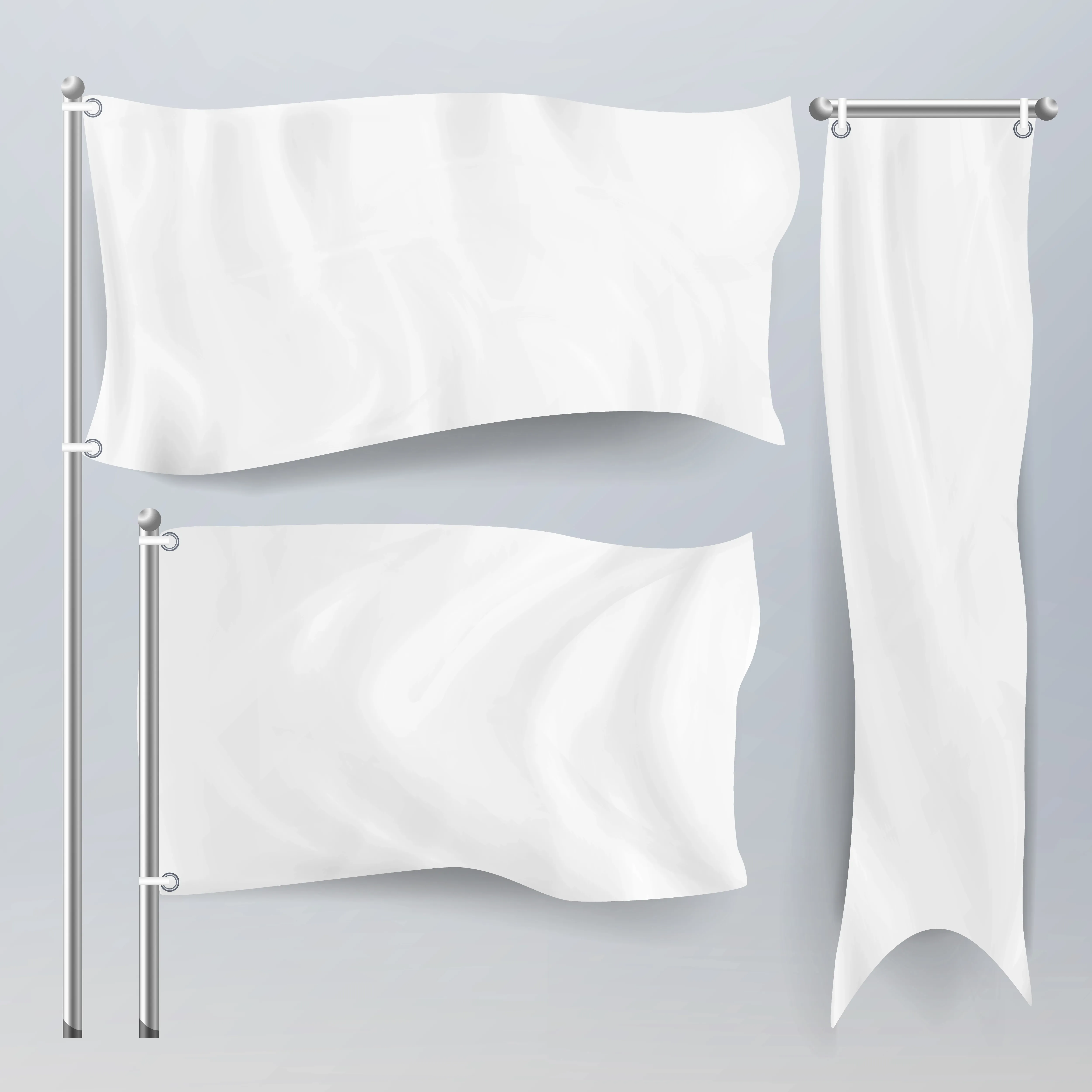Polyester vs. Nylon Flag: Choosing an American Flag
Patriots and flag enthusiasts hotly debate whether nylon or polyester is a better flag material. Both materials have merits. So, it can be a bit of a puzzle if you aren’t sure what you’re looking for when choosing an American flag. Let’s break it down and make it easier for you to choose before you go out and buy a brand-new star-spangled flag.

Table of contents
Durability
The first order of business is durability. Naturally, you want the flag to survive time and weather. Polyester flags have a solid reputation for strength. They’re flag heavyweights if you live somewhere with harsh weather, like strong winds or heavy rain. If your flag is going to face the brunt of Mother Nature’s mood swings and still keep its appearance and freshness, a polyester flag might be a better bet.

On the flip side, nylon flags are also quite durable, but in a different way. They’re lighter than polyester and more flexible, which is great for a part of the country with a gentler breeze. Nylon flags will fly high and proud with even the slightest wind, giving you that majestic flag wave in all its movie-like glory.
Appearance
Onto looks—because who doesn’t want a flag that catches the eye? That’s, after all, the point of the flag: to look good and draw attention. Nylon flags have a slight advantage in looks. Flags that use this material are particularly shiny and smooth. They catch the sunlight beautifully, and in turn, the sun makes the colors pop and sparkle. If you’re after a flag that looks vibrant and inviting and aren’t too worried about weathering, then nylon is a pretty good pick.
Don’t rule out polyester completely just yet, though. Polyester flags aren’t quite as shiny but still hold their own in the looks department. Their finish is more matte, which can make your American flag look a little more classic and dignified if that’s more of what you’re looking for. The colors might not “pop” as much as nylon, but they will still catch attention and look bold against the sky. The bottom line is that the nylon vs. polyester flag depends more on what you want rather than either one being objectively “superior.”

Weather Resistance
This point in the polyester vs. nylon flag showdown is closely tied to the aforementioned durability. In regards to weather resistance, polyester flags take the lead. Their thicker fabric makes them more suited to withstand heavy winds, rain, and even snow. If you live in an area that’s prone to extreme weather, a polyester flag could save you the hassle of replacing your flag too often.
Nylon flags are still weather-resistant in a way but show their strengths better in milder climates. They dry quickly and are less likely to fade in the sun. This advantage is great for sunny areas and waving proudly from a high point without shade. However, in very windy or harsh weather conditions, they might not hold up as well as polyester. To put it simply, they’re better at maintaining vibrant color and texture in the strong sun but might tear or wear out in the wind or under the fury of heavy rain.
Cost
Let’s talk numbers because even when you want to show your patriotism, you still have to care about cost. Generally, nylon flags are a bit more affordable than their polyester counterparts. If you’re on a budget or need to buy flags in bulk, nylon might be more economical. However, it’s worth keeping in mind the long-term.

Since polyester flags tend to last longer in harsh conditions, they might save you money over time if you live in an area with extreme weather or intend to have your flag outside for a long time. The nylon vs. polyester flag debate still comes down to your intentions and possible uses, even with regard to cost. Either might be better if you account for expectations adequately.
Flag Care
The “polyester vs. nylon flag” battle might see them facing off in durability, but neither is forever. Both types need care. After a spell of bad weather or a few months of display, take the flag down and check it out. If it’s dirty, a gentle wash in cold water with mild detergent will do wonders. Then, air dry it thoroughly to avoid shrinkage or damage.
Nylon dries quickly and can get back to flying in no time. Polyester, on the other hand, is tougher and can handle a bit more roughness, but it still needs a gentle wash, even if it takes a little longer to dry.
If your flag has seen better days and now has a tear or two, you can stitch up small rips by hand if you’re really careful. Keep your flag somewhere cool and dry, neatly folded or rolled when you no longer want it flying. That way, you avoid creases and keep it ready for its next appearance.

Pick Your Flag
A nylon vs. polyester flag comes down to you and whatever you feel is best. If you’re looking for a flag that flies beautifully, looks vibrant, and you live in a relatively mild climate, a nylon flag could be perfect with no issues. On the other hand, if durability in harsh weather conditions is your top priority, a polyester flag will likely serve you better.
No matter who wins between the nylon vs. polyester flag, what matters most is the pride and sentiment behind it. Both materials are of excellent quality and great for displaying the American flag with honor. At Custom Flags Now, you’ll find top-quality flags to match any expectation. Check out the selection for all your flag-flying needs, big or small.